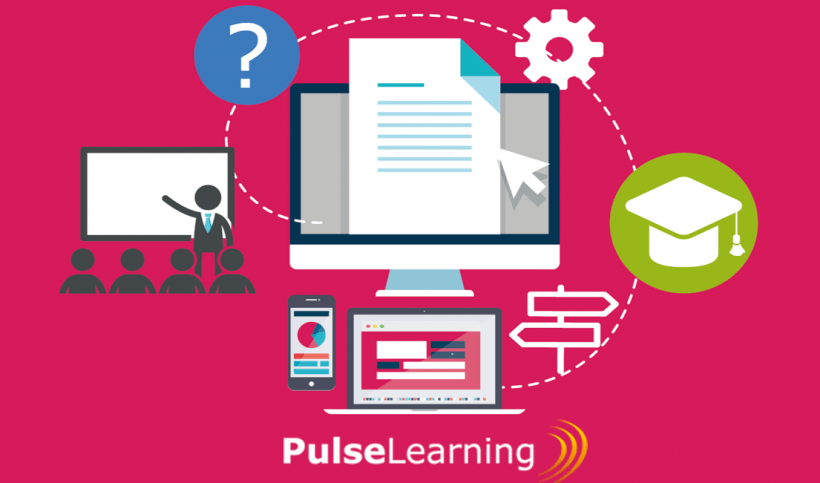How To Create Learner-Centered eLearning Courses
Learning is different for everyone. Each individual has their own way of processing, absorbing, and assimilating information. But how do you give everyone the eLearning tools and online resources they require? Especially when you're working with an audience of different online learners? Here are 8 best practices for creating learner-centered eLearning courses.
1. Step Into Your Online Learners' Shoes
You have to see things from your online learners' perspective. What are they looking for in your eLearning course? What are their goals and objectives? Are there any personal preferences you need to consider? Conduct audience research through surveys and interviews to learn as much as possible about their backgrounds, experience levels, and expectations. Step into their shoes and look at your eLearning course design from a different angle. For example, you may discover that your eLearning course needs more interactive elements or social learning opportunities. Another great feedback tool is pre-assessments. They allow you to determine what online learners know now and how much you need to cover in your eLearning course.
2. Encourage Self-Guided Exploration
The most powerful eLearning experiences involve self-guided problem solving and exploration. Online learners have the chance to examine the obstacle from all angles, and at their own pace. Start with a question or prompt. Then encourage online learners to use the eLearning tools and resources that are available to arrive at a solution. For example, present them with a real world mystery or case study and then put them in the role of a detective. This can even be a great online group collaboration project that builds teamwork skills.
3. Give Online Learners Time To Reflect, Reevaluate, And Reinforce
Information is just raw data until learners give it meaning. Encourage online learners to reflect on the topic and evaluate the key data points. Pose thought provoking questions that encourage them to challenge their assumptions and cognitions, or incorporate stories and real world examples to make the subject matter more relatable. The latter allows them to connect new information to preexisting knowledge, which improves retention and recall. You should also offer online learners knowledge refreshers to reinforce ideas and concepts. For example, self-assessments or interactive eLearning activities that involve real world application.
4. Focus On Practical And Personal Skill Building
Online learners are looking for information and skills that will help them in their real lives. They need to solve problems, tackle tasks, and accomplish real world goals. Therefore, your learner-centered eLearning course must be practical and personal. Research your online learners to gauge their expectations and identify the gaps. This includes performance, knowledge, and skill gaps that are holding them back. You can also survey your online learners to get their honest input. They may already know which strengths and weaknesses they need to work on.
5. Chart The eLearning Course And Then Let Online Learners Take The Wheel
Online learners must play an active role in the eLearning process. Empowerment fosters motivation, which leads to online learners engagement. However, you still need to achieve the eLearning course objectives. This means you have to strike a balance in order to reach the desired outcome. Create a list of eLearning activities and modules, or develop a clickable eLearning course map. Then allow online learners to pick and choose the materials that suit their needs. For example, an online learner needs to improve their sales skills. They select the negotiation simulation and product knowledge demos to bridge the gaps, while another sales employee may opt for the compliance online training module because they need to brush up on company policy.
6. Incorporate Social Learning Activities
Learner-centered eLearning courses are usually associated with asynchronous study. But this isn't always the case. In fact, you can integrate social learning activities so that online learners can benefit from online group collaborations. Create social media groups, online forums, and eLearning blogs that facilitate peer-based feedback. Divide them into teams and then ask them to create an online presentation. Group members are able to share their experience and skills, as well as improve their level of comprehension.
7. Make "Moment Of Need" Online Resources Readily Available
There are times when online learners require immediate online resources to overcome obstacles and solve real world challenges. They need targeted information that centers on specific tasks, skills, or topics. As such, you might consider a "just-in-time" online library that features microlearning online resources. For example, brief serious games or branching scenarios to improve communication skills, or online demos that highlight every step of a task and enhance performance behaviors. This online repository should also be mobile-friendly, so that online learners can access the materials remotely.
8. Gather Periodic Feedback From Your Online Learners
A learner-centered eLearning course is always a work in progress. This is due to the fact that the needs, expectations, and goals of your online learners are constantly changing. Thus, you must get feedback from them on a consistent basis. Conduct polls, interviews, and on-the-job observations to continually improve your eLearning strategy. For example, create new online resources to expand their knowledge and fill new skill gaps. You can also host live webinars or online forums to make the feedback process more interactive. Schedule the eLearning event well in advance and send invites to a select group of online learners. Give them a list of topics beforehand so they know what to expect, and encourage them to share their questions and concerns with the group.
Does your current eLearning strategy address the individual needs of your online learners? If not, these 8 best practices can help you make your next eLearning course more learner-centered, relatable and memorable. Remember, researching your online learners is the first and most important step of the process. This allows you to see things from their perspective and learn as much as you can about their goals, expectations, and backgrounds.
Do you need to build online learner engagement and form a meaningful connection? Read the article 6 Tips To Use eLearning Course Variables To Create Personalized eLearning to discover tips that can help you use eLearning course variables in your eLearning course design.









